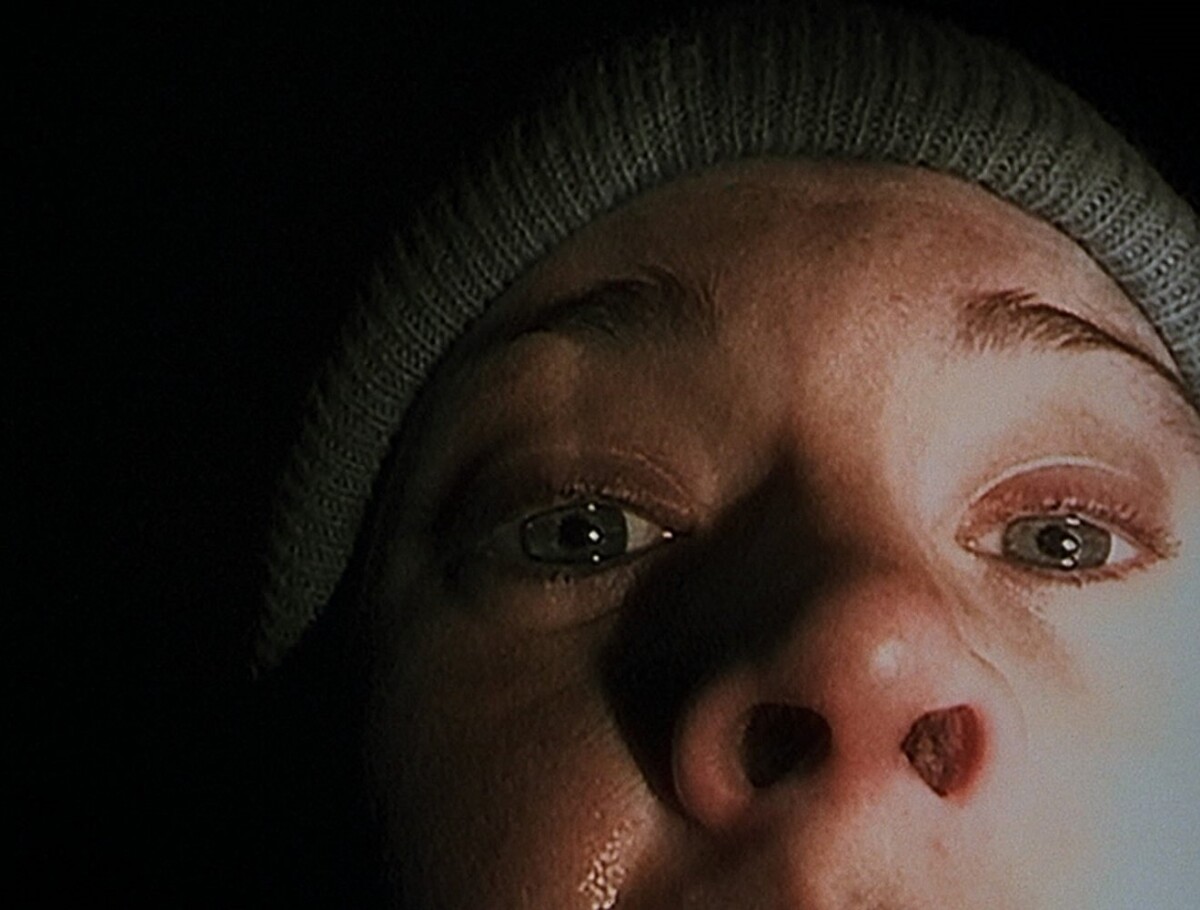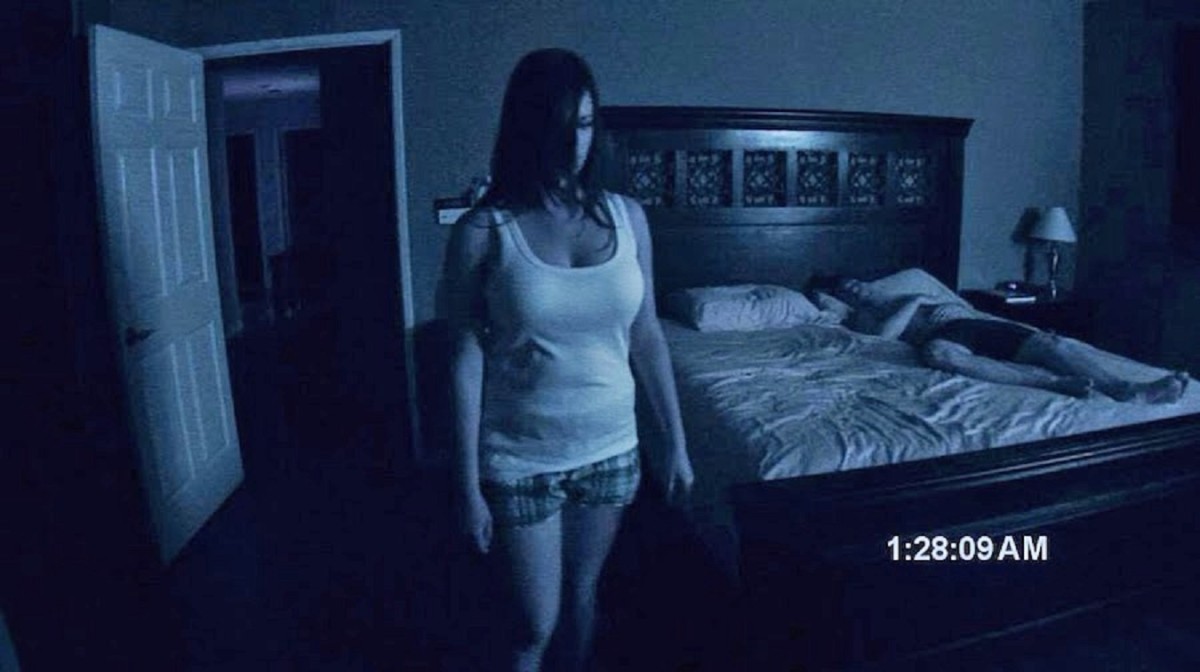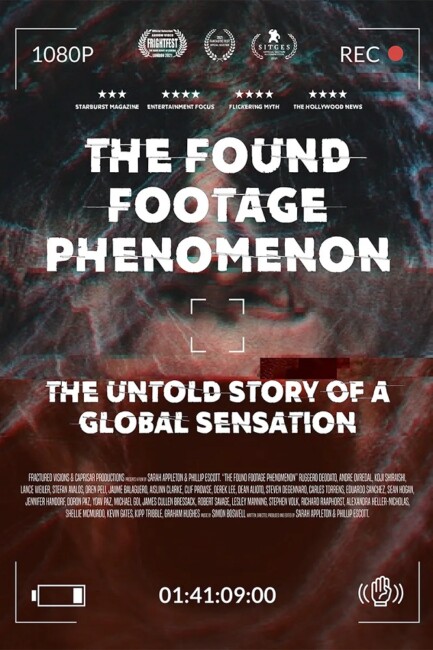aka The Found Footage Phenomenon: The Untold Story of a Global Sensation
UK. 2021.
Crew
Directors/Screenplay/Producers – Sarah Appleton & Phillip Escott, Photography – Sarah Appleton & Jim Kunz, Music – Simon Boswell. Production Company – Capristar Productions Ltd/Fractured Visions Ltd.
With
Dean Alioto, Stefan Avalos, Jaume Balaguero, John Brawley, Patrick Brice, James Cullen Bressick, Aislinn Clarke, Ruggero Deodato, Kevin Gates, Michael Goi, Jennifer Handorf, Sean Hogan, Graham Hughes, Alexandra Heller-Nicholas, Derek Lee, Lesley Manning, Shellie McMurdo, Andre, Doron Paz, Yoav Paz, Oren Peli, Cliff Prowse, Richard Raaphorst, Eduardo Sanchez, Robert Savage, Koji Shiriashi, Carles Torrens, Kipp Tribble, Stephen Volk, Lance Weiler
The Found Footage film is a genre that has emerged since the 2000s. It consists of films designed to give the impression they are made by people holding cameras while in the midst of action. This is a Documentary that charts the genre. In specific, it is a documentary that charts examples within the horror genre. (It does however leave aside examples of the Found Footage film that fall outside of the genre including Catfish (2010), Chronicle (2012) and Europa Report (2013), among others). A list of the Found Footage films that are covered on this site can be found here at Found Footage Films,
The various interviewees point to a number of interesting precedents to Found Footage – ones that in some cases even predate modern movie-making. These include everything from the diary entries from various characters that make up Bram Stoker’s Dracula (1897) and Orson Welles’s famous The War of the Worlds radio show of 1938, which pretended to be a live broadcast. There is the claim made that the scenes in Peeping Tom (1960) where we see attacks from the camera’s point-of-view make it the first Found Footage work.
We then move on to works like the non-horror David Holzman’s Diary (1967), which was the first film to employ Found Footage style and was regarded as an experimental work in its day, and the various Mondo films of the 1960s that offered up scenes of staged shock and outrage as though they were real documentaries. After some of these speculations, the film cites the notorious Italian-made Cannibal Holocaust (1979) as the first proper Found Footage film. An 80-year old Ruggero Deodato is interviewed and tells how he came up with the idea as a means of grounding the film, inspired by various news footage of the day.

Mention is also made of Snuff (1976), which predates Cannibal Holocaust, with its notorious faked ending pretending to be an actual snuff movie. The documentary charts the genre’s development through other key early works like the Belgian black comedy Man Bites Dog (1992). It gets interview time with Dean Alioto, the director of the UFO Abduction (1989) video; and of screenwriter Stephen Volk, the creator of UK tv’s Ghostwatch (1992) program that aired live on the BBC.
We then come to the work that defined the genre – The Blair Witch Project (1999). We get interview time with one of the directors Eduardo Sanchez (although not his co-director Daniel Myrick). Sanchez discusses the making of the film and the unique promotional strategy where he created a website and they convinced the public that what they were watching was a real film and the actors on screen were missing persons. It is observed that Blair Witch inspired few direct copies – Eduardo Sanchez’s theory is that it was supplanted by the Torture Porn film. Others point out how successive films trying to do the same thing throughout the 2010s ended up with a case of diminishing returns where audiences became so familiar with the technique that they no longer accepted what they were seeing as genuine footage.
The documentary traces the subsequent popularising of the genre throughout the 2000s – from the experiments by well-known directors such as George Romero with Diary of the Dead (2007) and Brian De Palma with Redacted (2007) to polished big-budget works that dabbled in the form such as Cloverfield (2008). We then arrive at Paranormal Activity (2007), which finally became the watershed that opened up the genre following its wide release in 2009.

A number of directors are interviewed, while key and influential works in the genre are highlighted. Many of them discuss the problems the form presents – the belief that people have that what is seen on screen is unrehearsed; the problems in continuing to find a justifiable reason to keep the camera rolling in the midst of the action. There is discussion of the works that push material to extremes and the question of balancing authenticity with going too far. There is also discussion with how technology has brought changes to the medium. The Found Footage film has largely died off by 2019-2020, although the filmmakers look to the new possibilities offered by the Zoom horror film and discuss Rob Savage’s Host (2020) – although surprisingly not the similar things done with the earlier Unfriended (2014).
We delve into a succession of films from the 2000s/2010s. Due time is given to The Last Broadcast (1998), which prefigured The Blair Witch Project in many ways, but ended up being overlooked in the wake of that film’s success. Other works are discussed including [Rec] (2007), Lake Mungo (2008), Shirome (2010), The Troll Hunter (2010), Afflicted (2013), The Borderlands (2013), Creep (2014) and Jeruzalem (2015) and the respective directors interviewed. And then shock works like Hate Crime (2012) and Megan is Missing (2013) – although neglected are some of the classics I wish had been covered like The Great American Snuff Movie (2003), Amateur Porn Star Killer (2007) and The Poughkeepsie Tapes (2007), with the latter being briefly mentioned but not dwelt on.
Of the two directors here, Phillip Escott had previously directed a great many documentary shorts to accompany dvd extras. He had previously co-directed one film with Cruel Summer (2016), a true crime work based on the horrific bullying of a handicapped boy.
Trailer here


